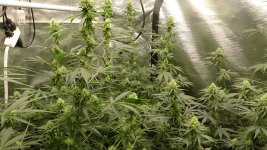CannaT
starin' at the world through my rearview
Sun is more intense in dry climates than in humid.
High humidity block sun light power but provide much more heat.
Afghan plants recive more light and more intense light with much more uv than Thai grown plants thats the fact.
Most afghani and paki plants grow in high additudes with very dry climate. At summer peak with dry air they recive more direct sunlight than Thailand grown plants.
High humidity block sun light power but provide much more heat.
Afghan plants recive more light and more intense light with much more uv than Thai grown plants thats the fact.
Most afghani and paki plants grow in high additudes with very dry climate. At summer peak with dry air they recive more direct sunlight than Thailand grown plants.


 Nevils x Positronics ^^^^
Nevils x Positronics ^^^^


 Tom showed up because I wrangled him back just to get some attention he didn’t even realize it and also I wanted him to sell out and he did …he came he saw and he conquered he doesn’t need ICMAG …people misunderstand me so completely but I bring it on myself
Tom showed up because I wrangled him back just to get some attention he didn’t even realize it and also I wanted him to sell out and he did …he came he saw and he conquered he doesn’t need ICMAG …people misunderstand me so completely but I bring it on myself
